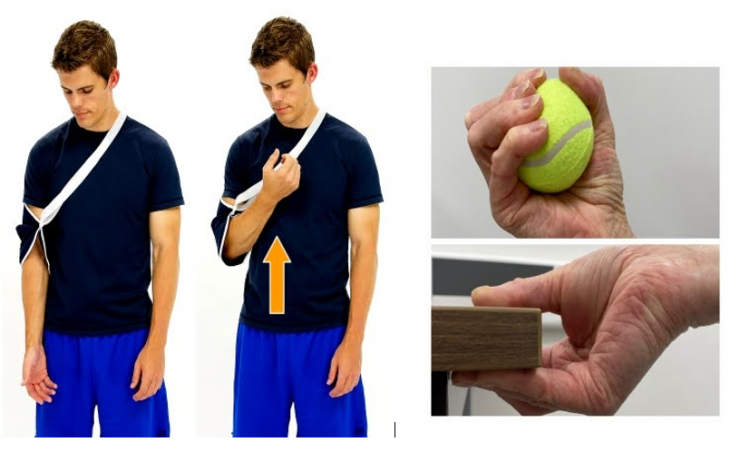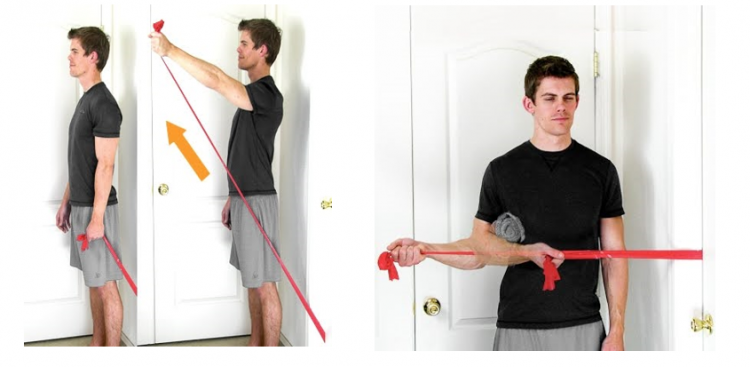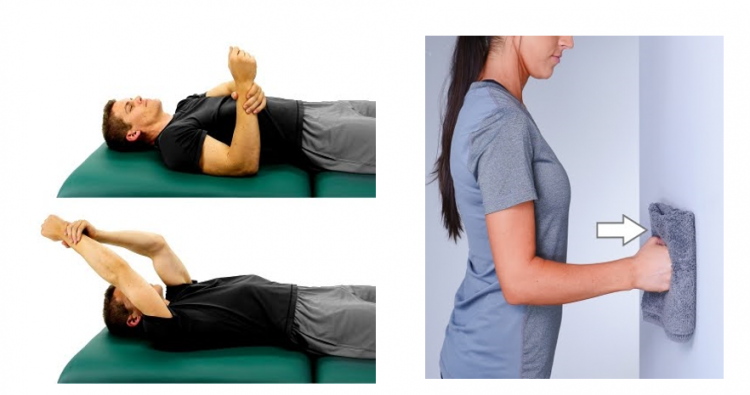From Crash to Recovery — A Guide to Cycling-Related Collarbone Injury
By Christopher Schwenker
Identification, Prevention, Treatment, and Rehab Tips For Cyclist With Collarbone Injuries
If you’ve been following the coverage of UAE Team Emirates’ Tadej Pogačar’s thrilling Spring Classics campaign and have observed the significant number of crashes resulting in racers abandoning the race due to collarbone injuries, there’s a valid explanation.
Collarbone fractures are the most prevalent traumatic cycling injury
A 2016 study involving 140 cyclists, both amateur and professional, revealed that 13.5 percent experienced a clavicle fracture, a significantly higher rate than the 2-6 percent seen in the general population. This makes it the most prevalent traumatic cycling injury.
Researchers in a 2023 study published in The Physician and Sports Medicine examined 54 male UCI World Tour riders throughout the 2019 season. They found that shoulder and collarbone injuries accounted for 11.4 percent of reported injuries. The impact of cycling collarbone injuries was significant, leading to prolonged absence from training and racing.
These findings underscore the prevalence of clavicle injuries and highlight the importance of a careful and informed approach to recovery to ensure a safe and efficient return to cycling activities.
As a physical therapist and competitive cyclist for over two decades, I’ve seen my share, and this is what I advise my patients to do for collarbone fractures.

What are the signs of cycling-related clavicle fracture?
In a cycling accident, riders instinctively extend their arms to cushion the fall. However, even a two-meter fall onto the shoulder or arm can generate enough force to cause a collarbone fracture.
Upon impact, the cyclist may hear a crack and experience sharp pain. When attempting to stand, they’ll feel their shoulder drooping forward and downward, often accompanied by a noticeable deformity, bump, or skin tenting at the fracture site.
Efforts to lift the arm will be agonizing, possibly accompanied by a grinding sensation. Bruising, swelling, and tenderness typically appear shortly after that.
What should you do immediately after a collarbone injury?
If you suspect a collarbone injury after a crash, get an x-ray as soon as possible. Meanwhile, protect the affected area and start reducing inflammation and swelling.
Create a makeshift sling using a friend’s jersey to support your arm close to your body. Immediately begin the PRICE principle: Protect, Rest, Ice, Compression, and Elevation.
Seek the opinion of a certified health professional and undergo an x-ray. Avoid returning to cycling until a physician has cleared you, as it could worsen the injury or result in a more severe fracture.

(Photo: Reproduced and adapted from JF Sarwak, ed: Essentials of Musculoskeletal Care, ed. 4. Rosemont, IL, American Academy of Orthopaedic Surgeons, 2010.)
Treatment options following a collarbone injury
Your x-ray shows a fracture. Now what? Your physician will present you with two treatment choices: conservative care or surgical fixation. Each has merits that you and your healthcare team will weigh against your athletic goals and health history to help you make an informed choice.
Conservative (non-surgical) treatment
Your doctor may recommend conservative treatment of an uncomplicated fracture, which involves immobilization in a sling for approximately six weeks.
Although conservative treatment avoids the risks associated with surgery, it generally has a lower success rate and longer recovery time, with potential cosmetic concerns.
A 2019 meta-analysis indicated that patients who underwent surgical treatment had better outcomes across all measures except for the complication rate.
Surgical treatment
Physicians often recommend a surgical approach for complex collarbone injuries or when the patient is eager to return to cycling. Surgery typically results in faster bone healing, less persistent pain, and a more efficient return to sports.
During the procedure, known as Open Reduction and Internal Fixation (ORIF), the surgeon will realign the bone and secure it with a plate and screws. Surgery provides stability to the collarbone, allowing cyclists to pedal on a stationary trainer sooner.
How can you prevent a cycling-related clavicle fracture?
Accidents happen, but there are steps you can take to improve your chances.
Be mindful of your surroundings and the experience level of those you’re riding with. Avoid slippery conditions that can cause your wheel to wash out or overlap wheels with other riders.
Learning to fall correctly can also reduce the risk of severe injury. Instead of instinctively reaching out to break your fall, it’s better to tuck and turn your shoulder, allowing the back of your body to absorb the impact.
Moreover, it’s crucial to address the potential effects of endurance cycling on bone health. Research has shown that cyclists may have lower bone mass density, putting them at risk of osteopenia or osteoporosis. To combat this, incorporating weight-bearing exercises into your routine and ensuring proper nutrition are essential.
When can you return to riding after a collarbone injury?
Based on recent surveys, orthopedic surgeons recommend that cyclists resume training 3-6 weeks after surgery and return to competition within 6-12 weeks. Riders may reintroduce low-intensity riding on an indoor trainer with the surgical arm supported and immobilized.
However, weight-bearing on the affected arm, such as placing the hand on the handlebars, is not advised during this initial phase. Cyclists undergoing surgery for collarbone injuries often experience faster bone healing, enabling them to return to riding sooner.
Collarbone injury rehabilitation
Essential Collarbone Injury Rehab Tips
- Keep your arm supported and immobilized in a sling for six weeks.
- Do not elevate your affected arm above 90 degrees for four weeks.
- Do not lift objects over five pounds for six weeks.
- Avoid repeated reaching away from your body for six weeks.
You can follow this protocol as a general guide, but always seek the recommendations of your physician or physical therapist.
Phase One — The First Two Weeks
It’s crucial to protect the injured area. Keep the affected arm in the sling while moving around. Remove your arm to perform range of motion (ROM) and gripping exercises a few times daily.

Phase Two — Two to Six Weeks
Most physicians will permit the initiation of shoulder ROM and isometric strengthening during this phase.
Phase Three — After Six Weeks
Known as the transition phase, athletes aim to achieve full ROM and begin higher-level strengthening exercises. Start with baseline resistance exercises and advance according to your tolerance, following the advice of your physician or physical therapist.

Recovering from a cycling collarbone injury takes time, but following this cycling physical therapist’s approach ensures a safe, effective, and efficient return to riding without limitations.
—————————————-
About the Author
After over twenty years as director of his private physical therapy practice, Chris stepped away to pursue his passion for virtual cycling and writing. He founded TheZommunique.com, the leading source of independent cycling esports journalism, is a frequent contributor to Cycling Weekly, Cycling News, and road.cc, and co-hosts The Virtual Velo Podcast. He cycled 3,900 miles across the US in 2022 to support his virtual cycling non-profit, The DIRT Dad Fund.


